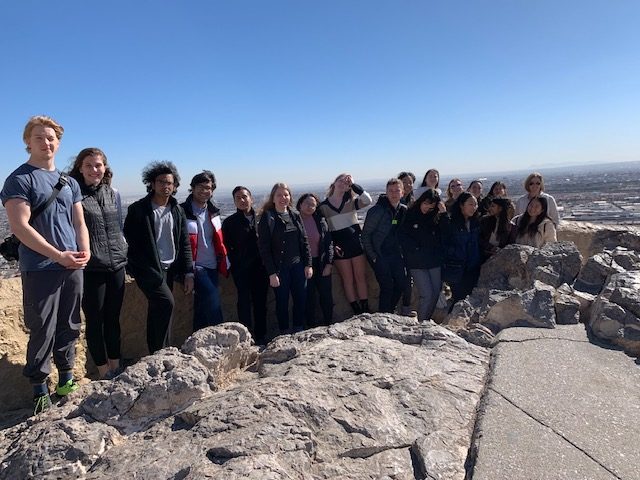
Border Trip: The End
Post by Sahil Lalwani and Ayush Sinha. Colgate Class of 2022.
As we look back at an incredible week of learning, exploration and travelling, it is difficult to consolidate our experiences in trying to understand immigration and its challenges into one blog post. Over the course of the week, we became acquainted with the complexities of immigration, both at the policy and grassroots levels, as we talked to speakers from diverse backgrounds including journalism, art, scholarship, law and the not-for-profit sector. The purpose of this blog post is to reflect on the ways in which our class may best utilize insights into immigration to further the conversation about immigration challenges to a broader population, promote advocacy for immigrants’ rights and increased legal representation as well as be better prepared to develop our own immigration policy that broadly accounts for problems that have been traditionally ignored.
We were all shocked by the amount of trust all organizations and speakers placed in us to share what they have experienced in their career and inspire us to be agents of change to solve major problems related to immigration. In fact, all speakers meant to acquaint all of us with the realities and ground level challenges of immigration right at the Southern border so that we can spread what we learn to various members of our school, communities and beyond. For example, Mr. Todd Miller, a prominent journalist and author of the popular book Border Patrol Nation: Dispatches from the Front Lines of Homeland Security, introduced us to the connections between the expansion of border apparatus, the military-industrial complex, and climate change and then prominently highlighted the role that our generation would have to play to advocate for the consideration of climate change concerns within the realm of immigration policy.
Similarly, Mr. Ruben Garcia, Director of Annunciation House, emphasized the dehumanization of immigrants at the border due to contemporary immigration policies. Mr. Garcia also showed tremendous faith in our generation to aid the larger society in empathising with the sufferings of immigrants. According to him, increased outreach and advocacy that sheds light on the barbaric nature of immigration policies by helping people realize their own privileges may lead to better and more humane immigration policies. Along similar lines, Ms. Gabriela Galup, a prominent artist, used her show to push us to recognize the vitality of human connections in promoting solidarity across borders. As a result, we now believe that recognizing the power of human connections that transcends geographical boundaries of borders would go a long way in removing the walls of xenophobia that often lead to the implementation of inhumane immigration policies in the first place. While we cite only a few specific examples, we believe that all speakers showed hope in our generation to understand the complexities of immigration and support policies that are empathetic to the suffering of immigrants.
We think our most important takeaway from this trip was the value of diverse voices in fully understanding and addressing the challenges related to immigration. Over the course of the trip, we were taken aback by the realization that there are many more aspects to immigration, including political and humanitarian, beyond the economic aspect we had largely covered in our class. The phenomenon of immigration seems to be intertwined with countless lives and will continue to impact countless more. As our class attempts to draft our own version of an ideal immigration policy, we would attempt to make the policy reflective of the diverse voices that have informed us over the course of the trip. Immigration policy and reform continues to be a work in progress, and we are sure that the inclusion of voices of diverse stakeholders in society would help us in being comprehensive and holistic in our approach.